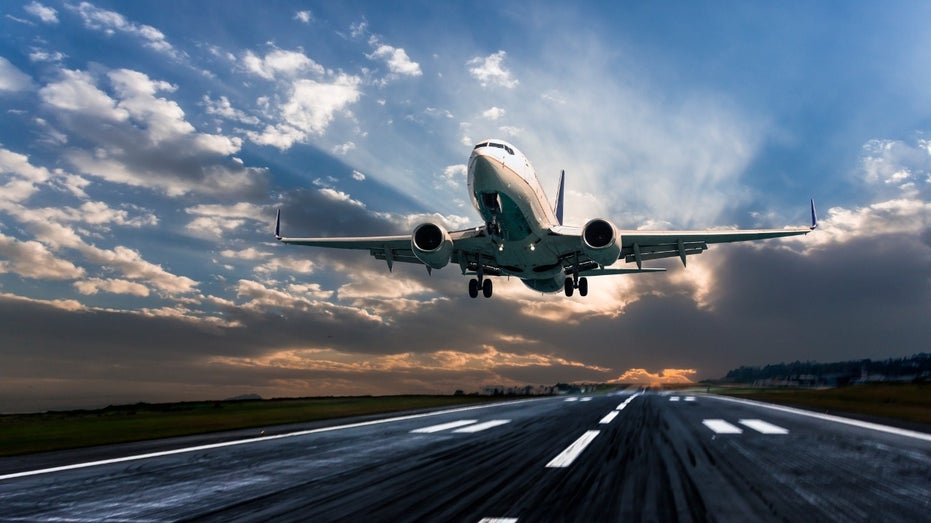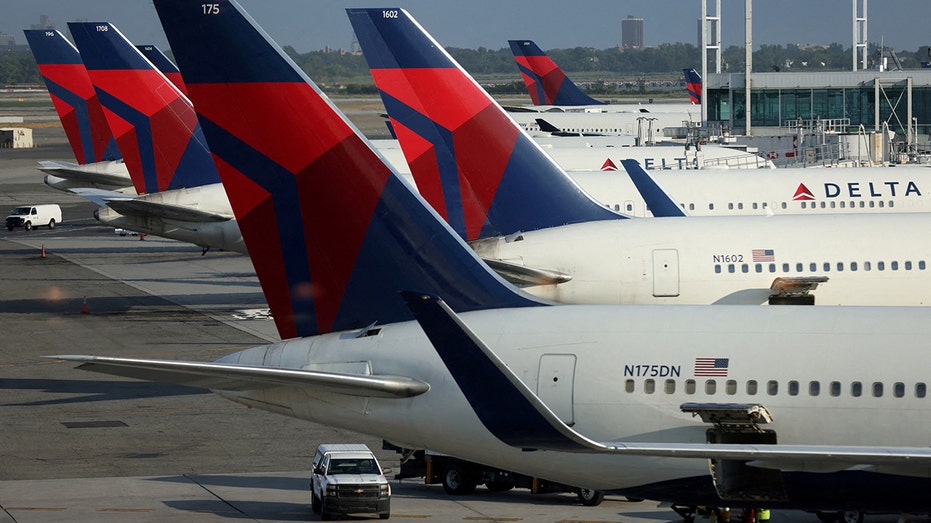FAA investigating runway incursion that led to near-miss between airliners in New York
Incursions get sorted into four categories based on the closeness of a possible accident
Modernizing 'robust' FAA system requires 'massive' infrastructure upgrade: Randy Babbitt
Former FAA administrator Randy Babbitt discusses the integrity of the air traffic control system after thousands of U.S. flights were grounded due to a system failure on 'The Claman Countdown.'
The Federal Aviation Administration (FAA) and National Transportation Safety Board (NTSB) are investigating the near collision between two airliners at New York's John F. Kennedy International Airport on Friday.
A spokesperson for the FAA told FOX Business that the potential collision was averted when a Boeing 737 operated by Delta Air Lines "came to a safe stop" as it was beginning to take off "after air traffic controllers noticed another aircraft crossing the runway in front of the departing jetliner." The statement added: "According to a preliminary analysis, Delta Air Lines Flight 1943 stopped its takeoff roll approximately 1,000 feet before reaching the point where American Airlines Flight 106, a Boeing 777, had crossed from an adjacent taxiway."
The FAA emphasized that its investigation is ongoing and that information is preliminary and subject to change. The agency didn't respond to a question about whether the incident has been sorted into the FAA's four categories for runway incursions, which indicate the severity of an incident.
BIDEN'S PICK TO LEAD FAA UNDER FIRE ALONG WITH ADMINISTRATION

An airplane takes off from an airport runway. (iStock / iStock)
Based on the details provided by the agency, the January 13th incident in New York is likely to fall into one of the more severe categories used by the FAA to assess runway incursions.
What are runway incursions?
Runway incursions are incidents at airports that occur when aircraft, vehicles or people are incorrectly present in the protected area that's designated for aircraft to land and take off. They are distinct from surface incidents, which involve an unauthorized movement or occurrence in a designated area that could affect flight safety.
The FAA's four categories of runway incursions represent varying degrees of danger but fall short of an actual accident:
- Category A — the most severe type of incursion — is a serious incident in which a collision was narrowly avoided.
- Category B incidents occur when separation decreases and there is significant potential for a collision that may cause a time-critical corrective or evasive response to avoid a collision.
- Category C incidents are characterized by having ample time and/or distance to avoid a collision.
- Category D incidents involve the incorrect presence of an aircraft, person or vehicle in a protected area designated for landing and take-off that have no immediate safety consequences.
FAA OUTAGE CAUSED BY PERSONNEL WHO ‘FAILED TO FOLLOW PROCEDURES'

American Airlines passenger jets prepare for departure near a terminal at Boston Logan International Airport, in Boston. (AP Photo/Steven Senne) (AP Images)
To help air traffic controllers prevent Category A and B runway incursions, the FAA has developed the Airport Surface Detection System — Model X (ASDE-X), which is a surveillance radar that tracks the surface movement of aircraft and vehicles at airport facilities that alerts controllers about possible incursions or other incidents.
As of Oct. 31, 2022, the ASDE-X radar had been deployed at 35 major airports around the country, including New York City's John F. Kennedy International Airport where Friday's incident occurred.
Runway incursions can be caused by operational incidents due to the action of an air traffic controller that results in less than the minimum separation between aircraft; pilot deviations like crossing a runway without clearance; and pedestrians or vehicles entering airport movement areas without authorization from air traffic control.
SENATORS DEMAND ANSWERS FROM SOUTHWEST AIRLINES CEO AFTER HOLIDAY MELTDOWN

Delta Air Lines planes are seen at John F. Kennedy International Airport on the July 4th weekend in Queens, New York City, U.S., July 2, 2022. (REUTERS/Andrew Kelly/File Photo / Reuters Photos)
The number of runway incursions at U.S. airports rose from 1,574 in fiscal year 2021 to 1,732 in fiscal year 2022, according to FAA data. The most common cause of incursions is pilot deviation, which was the cause of 1,084 incursions in FY2022, followed by vehicle and pedestrian deviations which were the source of 313 incursions. Through Jan. 11, the FAA has reported 27 runway incursions this month.
Collisions between airliners can have catastrophic consequences, and such a scenario resulted in the deadliest accident in aviation history in 1977 on the Spanish island of Tenerife. Overcrowding at the airport stemming from the closure of a different airport in the Canary Islands combined with poor visibility due to dense fog and yielded a disaster when a miscommunication between air traffic controllers and pilots resulted in one Boeing 747 taxiing on a runway that was being used by another to takeoff. The tragic collision and fire resulted in 583 fatalities and all 61 survivors were injured.
GET FOX BUSINESS ON THE GO BY CLICKING HERE
Airlines respond to runway incident
The two airlines involved in the aborted takeoff and near-miss in New York told FOX Business they prioritize the safety of their passengers and crew and are assisting federal agencies in their investigation.
"The safety of our customers and crew is always Delta’s number one priority. Delta will work with and assist aviation authorities on a full review of flight 1943 on Jan. 13 regarding a successful aborted takeoff procedure at New York-JFK," a spokesperson for Delta Air Lines told FOX Business. "We apologize to our customers for the inconvenience and delay of their travels."
A spokesperson for American Airlines told FOX Business, "The safety of our customers and team members is our top priority. We are conducting a full internal review and cooperating with the National Transportation Safety Board in their investigation."




















